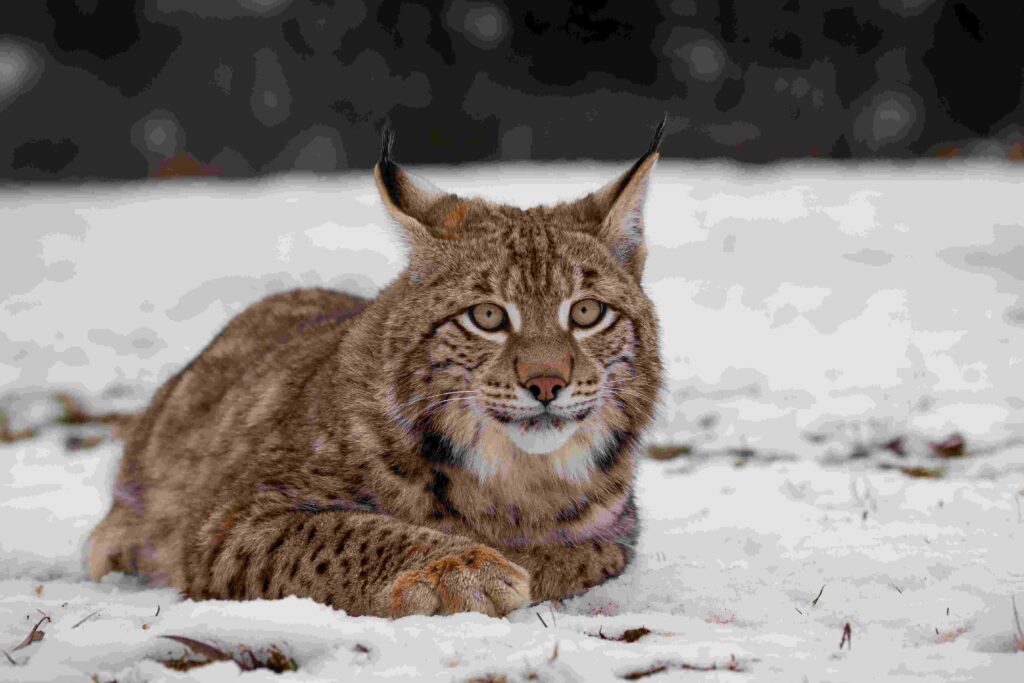
According to the International Cat Association’s breed standard for Siamese cats, the Lynx Point Siamese is a pattern that can be seen in Siamese cats rather than a distinct breed. The CFA breed standard only allows solid-colored points in four colors (seal, chocolate, blue, and lilac); the Lynx-Point pattern in Siamese is not recognized by the organization1.
The Colorpoint Shorthair, basically a Siamese with more acceptable colors and patterns, like lynx point, is recognized as a distinct breed by the Canadian Feline Association and the Canadian Cat Association. Thus, instead of seeking a Lynx Point Siamese, you might try looking for a Colorpoint Shorthair that follows the Lynx Point pattern. Within the points on the extremities (head, legs, and tail), there are tabby markings that make up the lynx point pattern. There are various colors available for Lynx Point Siamese, such as blue, blue-cream, chocolate, chocolate tortie, cream, lilac, lilac-cream, red, seal, and seal-tortie.
Features of Lynx Point Siamese
The lynx point Siamese breed, like any Siamese, is energetic, gregarious, loving, and inquisitive. Some of the most passionate “Velcro cats” are Siamese, a moniker that describes their great desire to be near—and sometimes even touch—their favorite humans. Following you around the house to find out what’s happening that day, they want to be a part of the activity. Lynx Point Siamese typically get along well with other family pets, including other cats and dogs who get along with cats, because they are such gregarious animals. The Lynx Point Siamese is a very talkative breed, just like the majority of Siamese and colorpoint shorthairs.
It is probably “chatting” away with loud meows and yowls if the cat is awake. The Lynx Point Highly intelligent, Siamese can even be taught entertaining tricks. Use lots of delicious food rewards and positive training techniques like clicker training.
| Affection Level | High |
| Friendliness | High |
| Kid-Friendly | High |
| Pet-Friendly | High |
| Exercise Needs | Medium |
| Playfulness | High |
| Energy Level | Medium |
| Intelligence | High |
| Tendency to Vocalize | High |
| Amount of Shedding | Low |
An Overview of Lynx Point Siamese History
In the 1940s and 1950s, several American breeders started experimenting with color in the Siamese breed, which led to the creation of the Lynx Point Siamese. When a red tabby American shorthair and a seal point Siamese were crossed, the Siamese breed was introduced to an entirely new spectrum of colors. These new cats came in colors other than the four solid classic Siamese colors, yet they nevertheless had a very similar appearance to Siamese cats. Some color points had additional patterns, such as tortie point (tortoiseshell markings) and lynx point (tabby markings).
The new breed dubbed the colorpoint shorthair, was recognised by several cat registries as a distinct breed apart from the Siamese. Other cat registries revised the Siamese breed standard to incorporate the new colors and patterns after concluding that these cats were still Siamese.
The colorpoint shorthair is available in sixteen distinct colors: parti-color point (blue-cream, chocolate-tortie, lilac-cream or seal-tortie), lynx point (blue, blue-cream, chocolate, chocolate tortie, cream, lilac, lilac-cream, red, seal or seal-tortie), and solid color points (red, cream, seal, blue, chocolate, and lilac).

Siamese Care Lynx Point
The short, silky coat of the Lynx Point Siamese is simple to maintain. There isn’t much shedding on the coat. To get rid of loose hair, brush once a week using a soft bristle brush, grooming mitt, or rubber curry brush. To keep their coats silky and glossy, give these inherently clean cats an occasional bath. Check for symptoms of dirt inside your Siamese cat’s ears periodically and clip your cat’s nails once a week or every other week. Never put anything like a cotton swab inside a cat’s ear; instead, use a cat ear cleanser and a cotton ball or gauze square to clean the ears if they appear dirty. Make an appointment with your veterinarian to rule out ear mites or an infection if your Lynx Point Siamese dog’s ears appear red, swollen, or overly dirty, or if you observe it shaking its head or picking at its ears.
Siamese Lynx Nature
This cat is very lively. Give them lots of perches, scratchers, and climbing possibilities to ensure they get adequate exercise. If you set multiple scratchers of different kinds, you can help ensure that your cat scratches are in the proper places and not on your carpet or sofa. Certain cats enjoy scratching vertically, like on posts or cat trees; others prefer horizontally, such on cardboard or sisal scratchers that rest flat on the ground; yet others like to scratch both vertically and horizontally. Your Lynx Point Siamese will enjoy playing with you to release some of their pent-up energy.
Appearance
The Lynx Point Siamese breed is incredibly elegant and refined, agile, and powerful without being hefty. The breed has a medium-sized physique with tapering lines and fine bones that are long and tubular. The legs have a lengthy, muscular build with excellent bone structure. Compared to the front legs, the back legs are marginally taller.
The wedge-shaped head of this breed, with its flat forehead and fine nose, is one of its distinguishing features. Large ears that follow the wedge’s lines at their base are characteristic of Lynx Point Siamese dogs. The almond-shaped, medium-sized eyes, which are always a rich, vibrant blue, lean in the direction of the long, straight nose. The short coat is glossy, finely textured, tight, and close-lying.
Nutrition & Diet
The Lynx Point Siamese has a little build but a powerful build. If given adequate stimulation and chances to run, climb, and play, this energetic breed will usually get plenty of exercise. It’s a good idea to keep a tight eye on your cat’s weight to make sure they’re keeping slim, even if they are less likely to gain weight than more sedentary types. Consult your veterinarian if you’re unsure about your cat’s appropriate weight.
Preventing the onset of some health problems, like as diabetes, heart disease, and arthritis, can be achieved by keeping your Lynx Point Siamese trim. Avoid free feeding, which can result in overeating, and always give your cat measured portions of food at regular mealtimes (twice a day for mature cats). A nutritious meal for your Lynx Point Siamese might be suggested by your breeder or veterinarian.
The Science of Colour Prints of Lynx Point Siamese
These marks have a special biological origin. An enzyme responsible for the synthesis of the pigment melanin has a hereditary abnormality that affects all colorpoint cats. The mutation makes the enzyme heat-sensitive, which makes it ineffective at body temperature normal.
Melanin, or pigment, is therefore only produced in the colder bodily portions of the animal, such as the ears, tail, paws, and tip of the face.
From Infancy to Adulthood: The Development of the Colorpoint System
Because their whole body was maintained inside the warmth of their mother cat’s womb, Siamese kittens are born pale all over, making them essentially a type of albino. The colorpoint pattern doesn’t start to manifest until they reach adulthood and develop new hair in their coat.
The History of the Siamese Breed
All colorpoint cats—those with darker-colored extremities—have their origins in Thailand, once known as Siam. Old Thai poetry has the first known account of an encounter with one of these cats. This poem tells the story of a unique cat with a pale body and dark feet, ears, tail, and lower face. Western tourists were immediately drawn to this peculiar breed, which resulted in the cat being dubbed the “Siamese cat”.
The Introduction of Siamese Cats to the West
The great journey of Siamese cats to the West commenced as the 19th century concluded.
When they were transported into the US and the UK, cat enthusiasts took an interest in and affection for them. Dedicated breeding programs were started by Siamese cat organizations that appeared on both sides of the Atlantic at the beginning of the 20th century.
Siamese Cats: Symbols of the World of Cat Fancy
The Siamese cat quickly became well-known due to its distinctive features. It’s one of the rare species that even those who aren’t very familiar with cat culture can recognize right away. As per the registries maintained by the Cat Fanciers Association, the Siamese breed is constantly ranked in the top 10 most popular cat breeds. The popularity of Siamese cats may be traced back to some of the first cat shows that were held in the US and the UK.
Conclusion
Are you thinking about bringing a Lynx Point Siamese cat into your home? Make sure you provide a purebred Siamese adequate company during the day and a safe, stimulating environment if you’re thinking about adopting one. Like any pedigreed cat, your Siamese will need to be kept indoors only (generally spelled out in the sales contract of each licensed breeder), so make sure your house is ready for an energetic, perceptive, and curious cat.
FAQs
It is a type of Siamese cat with distinctive “tabby” markings, such as stripes, in addition to the breed’s characteristic color points.
Lynx Point Siamese have a more varied coat pattern with stripes or spots, while traditional cat has a more solid point coloration.
Lynx Point Siamese cats are known for their playful, affectionate, and sociable nature, making them great companions for families and individuals alike.
Cats of the Siamese breed are not hypoallergenic. But there isn’t a cat breed that is completely hypoallergenic, certain allergy sufferers may be able to handle particular breeds better than others. Although individual sensitivities can vary, Siamese cats produce allergies just like any other breed. Allergens in the house can be reduced with regular cleaning and grooming.





Pingback: What Makes Seal Point Siamese So Special?
This post was so insightful. Thanks for sharing your knowledge!